Potrebujeme váš súhlas na využitie jednotlivých dát, aby sa vám okrem iného mohli ukazovať informácie týkajúce sa vašich záujmov. Súhlas udelíte kliknutím na tlačidlo „OK“.
ASTM E569/E569M-13
Standard Practice for Acoustic Emission Monitoring of Structures During Controlled Stimulation
Automaticky preložený názov:
Štandardné praktiky pre akustické emisie monitorovanie stavieb V kontrolovaných stimulácie
NORMA vydaná dňa 1.1.2013
Informácie o norme:
Označenie normy: ASTM E569/E569M-13
Poznámka: NEPLATNÁ
Dátum vydania normy: 1.1.2013
Kód tovaru: NS-47237
Počet strán: 5
Približná hmotnosť: 15 g (0.03 libier)
Krajina: Americká technická norma
Kategória: Technické normy ASTM
Kategórie - podobné normy:
Anotácia textu normy ASTM E569/E569M-13 :
Keywords:
active source, clustering, controlled stimulation, critically active source, critically intense source, intense source, leaks, loose parts, mechanical stress, pressure vessel, source location, source classification, thermal stress, ICS Number Code 91.120.20 (Acoustics in buildings. Sound insulation)
Doplňujúce informácie
| Significance and Use | ||||||||||||||
|
5.1 Controlled stimulation i.e. the application of mechanical or thermal load, can generate AE from flawed areas of the structure. Sources may include flaw growth, oxide fracture, crack face stiction and release on load application, and crack face rubbing. 5.2 The load range above normal service (peak) load is used to propagate fatigue cracks in the plastically strained region ahead of the crack tip. Crack propagation may not be a reliable source of AE, depending on the alloy and microstructure, the amount (rate) of crack extension, and possibility of brittle fracture in a segment of crack extension. 5.3 Load increases resulting in significant ductile tearing may produce less emission than expected for the amount of crack growth. Processes that result in more brittle cleavage fractures are more detectable and produce more emission for smaller amounts of flaw growth. These include corrosion fatigue and stress corrosion cracking modes of flaw growth, and would also be more likely in cast or welded structures than in fabricated (forged, rolled or extruded) structures. Distributed defect structures such as hydrogen embrittlement, or creep cavitation in high temperature steels may also produce significant emission without evidence of an existing crack-like flaw. 5.4 Application and relaxation of load can produce secondary mechanically-induced emission that is not related to flaw extension. This includes crack face stiction release on loading—usually evidenced by emission at the same rising load value regardless of peak load; or crack face rubbing on load release as the fracture surfaces come back together. 5.5 The load rate can be a significant concern as instrumentation can become saturated with AE activity. The ability to differentiate real data from background noise can be compromised. 5.6 Background noise must be fully investigated and minimized before any AE monitoring can begin. |
||||||||||||||
| 1. Scope | ||||||||||||||
|
1.1 This practice provides guidelines for acoustic emission (AE) monitoring of structures, such as pressure vessels, piping systems, or other structures that can be stressed by mechanical or thermal means. 1.2 The basic functions of an AE monitoring system are to detect, locate, and classify emission sources. Other methods of nondestructive testing (NDT) may be used to further evaluate the significance of reported acoustic emission sources. 1.3 Units—The values stated in either SI units or inch-pound units are to be regarded as standard. The values stated in each system may not be exact equivalents; therefore, each system shall be used independently of the other. Combining values from the two systems may result in non-conformance with the standards. 1.4 This standard does not purport to address all of the safety concerns, if any, associated with its use. It is the responsibility of the user of this standard to establish appropriate safety and health practices and determine the applicability of regulatory limitations prior to use. |
||||||||||||||
| 2. Referenced Documents | ||||||||||||||
|
Podobné normy:
Historická
1.9.2010
Historická
1.6.2013
Historická
1.4.2009
Historická
1.5.2010
Historická
1.9.2012
Historická
1.7.2009



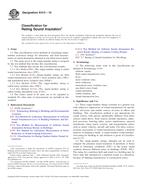 ASTM E413-10
ASTM E413-10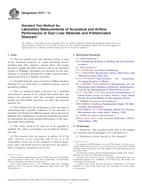 ASTM E477-13
ASTM E477-13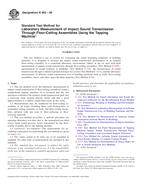 ASTM E492-09
ASTM E492-09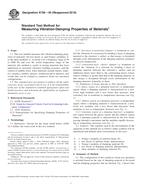 ASTM E756-05(2010)..
ASTM E756-05(2010)..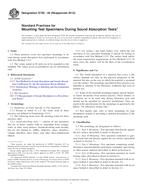 ASTM E795-05(2012)..
ASTM E795-05(2012)..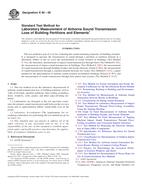 ASTM E90-09
ASTM E90-09
 Cookies
Cookies
